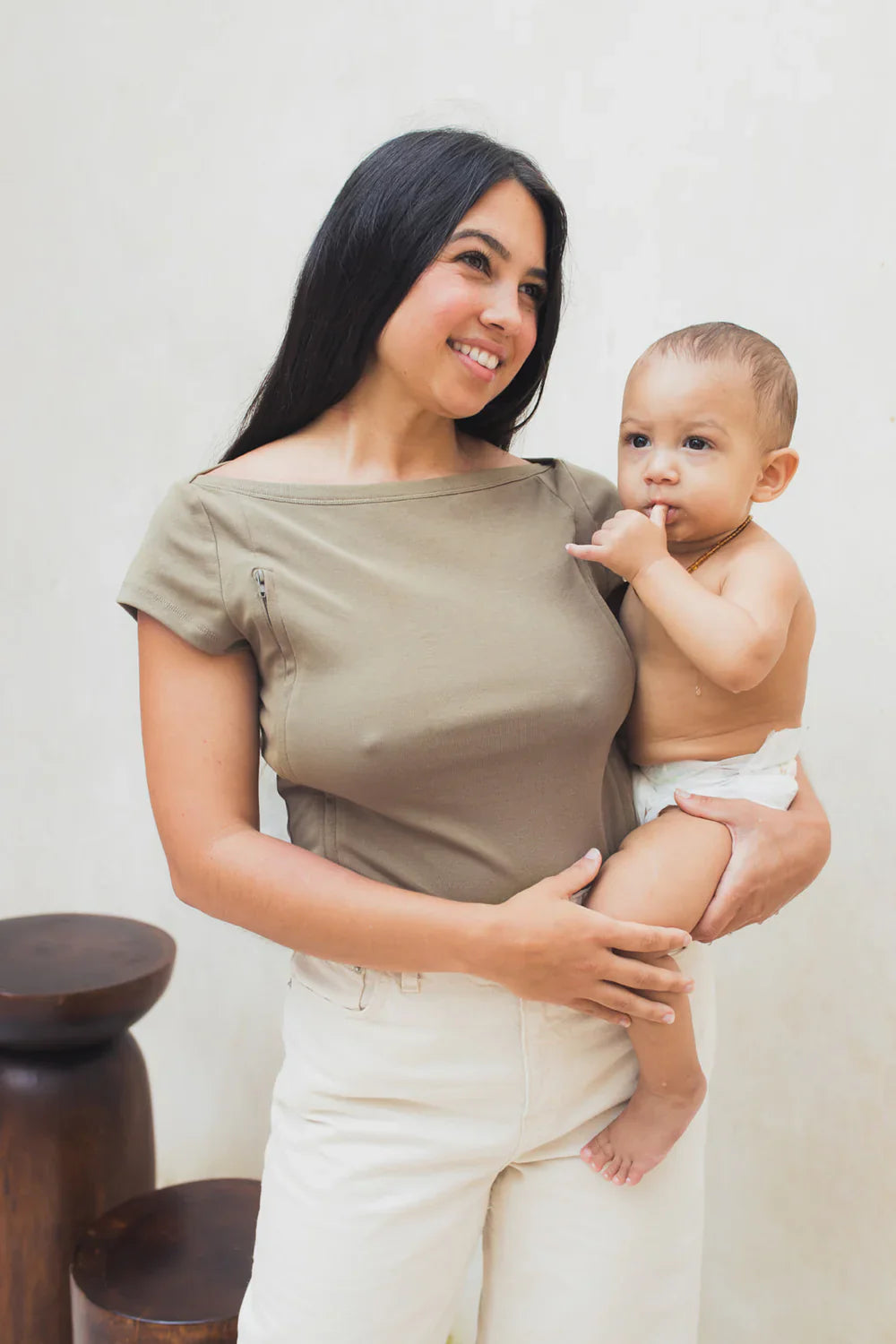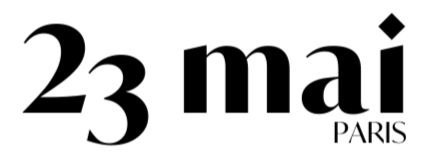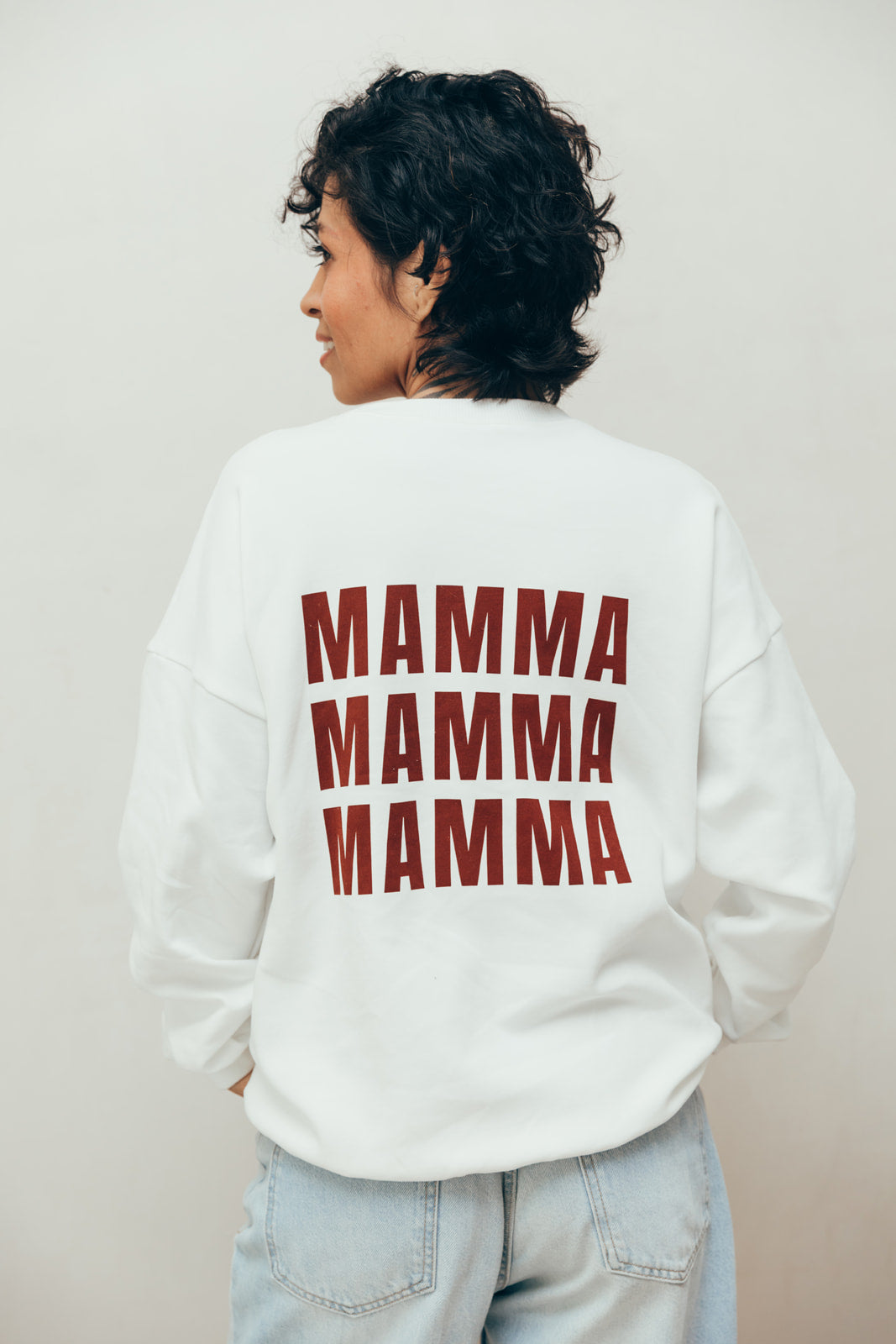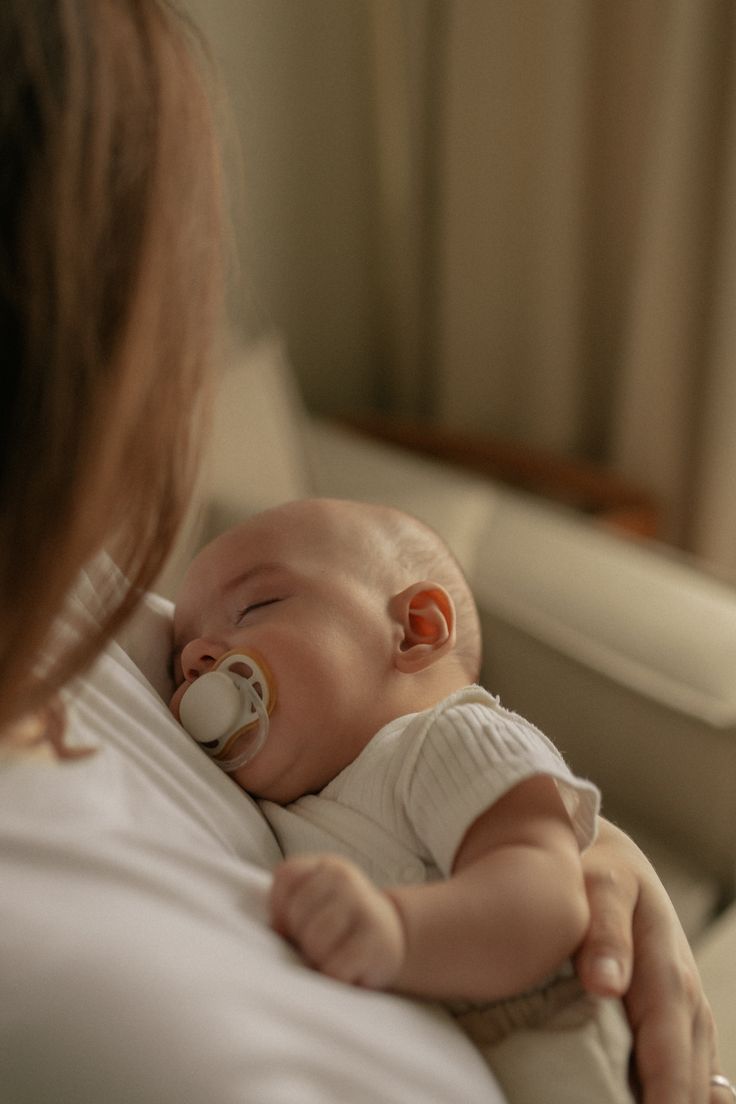
Breastfeeding position
Did you know that there's no such thing as a "good" breastfeeding position? The size of your breasts, the way your baby latches on and, above all, your comfort level determine the position that suits you best.
L'reast-feeding is a unique experience, rich in moments of complicity, but also in challenges. It's a mutual learning process for you and your baby. Have you noticed that when you place your naked newborn on your chest, he instinctively seeks out the nipple? This natural behavior shows us that breastfeeding can feel natural... and it is! But that doesn't mean it's easy.

In the first few months, finding comfortable breastfeeding positions can be a real challenge, especially when you're looking for the ideal position for your newborn. When we accompany mothers on their breastfeeding journey, we find that alternating positions not only helps avoid discomforts such as sore nipples or obstructions, but also creates a stronger bond with your baby.
If you're expecting your baby and you're already learning about breastfeeding, you're on the right track! In this practical guide, I'll tell you everything you need to feel comfortable, confident and supported as you breastfeed: from preparing a comfortable space with cushions to support your back, to specific techniques for each position.
Because breastfeeding is much more than just feeding: it's about bonding, soothing and loving.
The difference between posture and nursing position
When you're preparing for your baby's arrival or starting to breastfeed, you're likely to come across two terms that often lead to confusion: "posture" and "position". Although they seem identical, they describe different aspects of breastfeeding that are essential for comfortable, successful breastfeeding.
What is a posture?
Posture is the way you, as a mother, position your body for breastfeeding. It's about your body's behavior during breastfeeding. You can be sitting in a comfortable armchair, lying on the bed or even standing up if it seems more convenient at the time.
The most important thing here is your comfort. Think about it... you'll spend several hours a day breastfeeding, so you need to find a sitting or lying position in which your back, shoulders and arms are relaxed. Nursing cushions are specially designed to give you this support and reduce tension in areas such as arms, shoulders and neck.
Here are some positions you can adopt:
-
Sitting in an armchair or rocking chair with armrests
-
Lie on the bed with pillows for support
-
Semi-recumbent with the baby on your body
Remember to support your back at all times to avoid muscle tension. There is no single position for all women; every mother will find the one that suits her best.

What is a position?
Position, on the other hand, refers specifically to the way you position your baby for suckling. This is the infant's behavior during breastfeeding.
There are several positions for your baby: cradle, cross, American soccer (also known as the "watermelon" position) or side-lying. Each has its own advantages, depending on the situation. For example, the American soccer position is particularly useful after a Caesarean section or when breast-feeding twins.
The most important thing is that the baby's body is aligned so that the ear, shoulder and hip form a straight line. This will enable him to suck and swallow without difficulty. It used to be said that the baby should be "navel to navel" with his mother, but we now know that this doesn't always work, as it depends very much on the natural orientation of our nipples.

Why are both important?
The right combination of your posture and your baby's position is essential for several reasons:
-
Comfort and duration If you're not comfortable, your back will ache and feedings will seem interminable.
-
Efficient milk transfer A well-positioned baby feeds more efficiently, helping to maintain good milk production.
-
Preventing problems Alternating positions reduces the risk of cracks, as your baby presses on different points of the breast. It also helps prevent obstructions.
-
Adapting to special situations Certain positions are preferable after a caesarean section, with twins or if your baby has special characteristics.
-
Correct latch The right position allows your baby to open his mouth wide and latch on to the areola, not just the nipple, thus avoiding pain and injury.
Breastfeeding is one of the most important and personal decisions you'll ever make as a mother. Don't worry if you don't find the ideal posture and position at first... with time, you and your baby will find your own rhythm. The important thing is to pay attention to these aspects in the early days, as they can make the difference between a painful experience and a rewarding one.

Preparation before breast-feeding
Proper preparation before you start breastfeeding can completely transform your experience. Although breastfeeding is a natural process, it also requires learning and adaptation. When preparing for your baby's arrival or when you start breastfeeding, taking the time to create a supportive environment will make all the difference between a stressful experience and a pleasant one.
Choose a comfortable spot
To enjoy breastfeeding to the full, we need a calm, welcoming space. In the first few weeks, you'll spend many hours a day breastfeeding. If you don't make yourself comfortable, you'll suffer from backache and feedings will seem interminable.
Creating a special breastfeeding corner offers several advantages:
-
A well-lit place to watch your baby suckle
-
A space away from noise and drafts, so that your baby can feel at ease.
-
An atmosphere that brings you emotional tranquillity to strengthen the bond with your baby
Essentials for your nursing space include a chair with a firm backrest, a side table to keep water and snacks close at hand, and perhaps a warm-light lamp for night feeds. If your body is tense while breastfeeding, it will be more difficult to maintain good posture, which affects the baby's latch.

Use of cushions and pillows
Nursing pillows are real allies that not only increase your comfort, but also help you maintain good posture when breastfeeding, preventing back, arm and neck pain.
There are several types to suit your needs:
-
C-shaped: perfect for most morphologies, they guarantee good support for your arms.
-
O-shaped: they completely encircle your torso, ideal if you're a new mom.
-
Half-moon: they hug your side, but may be less suited to certain morphologies.
-
Whether churro or long, they offer great versatility for a wide range of uses.
Did you know that a good nursing pillow relieves tension in your back and arms as you hold your baby? And if you've had a Caesarean section, it allows you to bring your baby closer without pressing on your scar, avoiding any discomfort during your recovery.
Most importantly, these accessories help you position your baby correctly to achieve a good grip, preventing problems such as crevices or obstructions.

Useful products from May 23
At 23 mai Paris, you'll find products specially designed for nursing mothers that make the breastfeeding process so much easier. Their collections include garments that allow you to breastfeed discreetly without having to "undress" to feed your baby.
Among the most useful products are t-shirts with discreet side openings that allow you to maintain your personal style while nursing comfortably anywhere. These garments are designed for mothers who want to breastfeed freely without sacrificing confidence or good taste.
They also offer specific accessories, such as nipple shields, to ease the pain or difficulties of breastfeeding. The wonderful thing about these products is that they combine functionality and style, making you feel good during this special time.
Before you start trying out different breastfeeding positions, remember that becoming a mother changes everything: your schedule, your priorities and even your energy. That's why it's important to organize help right from pregnancy, asking your partner, family and friends to support you with household chores until breastfeeding and the bond with your baby are well established.
Cradle and cross positions
Among the different breastfeeding positions, the rocking position and the crossover position are perhaps the best known. Both offer unique advantages depending on your stage of breastfeeding, and mastering them correctly can completely transform your breastfeeding experience.
How to place your baby in the lullaby position
The lullaby position is the image we all have in mind when we think of a breastfeeding mother. It's the classic position par excellence, but that doesn't mean it's easy to achieve, especially at first. To achieve it correctly :
-
Sit comfortably and hold your baby with the arm on the same side as the breast you are offering (if you are breastfeeding on the right side, use your right arm).
-
Place your baby's head in the middle of your forearm, never on your elbow or wrist.
-
With the same hand, support her back, keeping her body aligned.
-
Make sure his ear, shoulder and hip form a straight line.
-
Bring your nipple up to her nose to arouse her search reflex.
This position is ideal when your baby already has some experience of breastfeeding. However, don't underestimate the power of a good nursing pillow! It will help you to keep your baby at the right height without tension in the back or shoulders.
Although it seems simple, many mothers find it hard to adopt this position at first. Proper support behind your back makes all the difference during those seemingly endless feeds when you first start.
Advantages of the cross position for newborns
The crossed position is a variation that gives you more control, perfect for newborns. Unlike the traditional position, here you use the arm opposite the breast you're offering. For example, if you're left-breastfeeding, you hold your baby with your right arm.
Why does this position work so well?
-
Total head control By gently supporting the back of the head (just behind the ears), you can guide your baby's mouth to your breast with precision.
-
Better grip Your free hand can shape the breast, enabling your baby to grasp the areola and nipple correctly.
-
Perfect for small babies It provides stability for newborns or babies who have difficulty suckling.
-
One hand free you can attend to other needs while your baby nurses.
In the first few weeks after giving birth, when everything seems new and difficult, well-designed nursing pillows make all the difference. They help relieve tension in your arms and shoulders while keeping your baby in the ideal position.
An important tip: with a newborn baby, don't support the head directly, but the base of the neck. If you press on his head, his chin could tilt towards his chest, resulting in a shallow hold that could end up hurting your nipples... and nobody wants that!

Common mistakes when using these positions
In my experience with breastfeeding mothers, I have identified some common mistakes that can seriously undermine the effectiveness of these positions:
-
Incorrect height Placing the pillow too high lifts the baby excessively, causing tension in the grip and nipple pain.
-
Poor head hold In the cross position, pressing on the newborn's head rather than the base of the neck results in a shallow, painful grip.
-
Space between mother and baby When there's a gap between your bodies, the baby loses his bearings and has trouble finding his way to the breast.
-
Poor alignment Not maintaining a straight line between your baby's ear, shoulder and hip complicates sucking and swallowing.
-
Forgetting to support your back Not placing support behind your back generates tension and fatigue during prolonged feedings.
Well-designed nursing pillows help to correct these errors by providing adequate support for both you and your baby. What's more, they allow you to easily alternate between the two positions, avoiding overloading certain milk ducts.
Don't forget that both positions require practice... like almost everything else in motherhood! Don't be discouraged if they don't work perfectly from the start. With patience and time, you and your baby will find your own rhythm for comfortable, nourishing breastfeeding.
Lying down: on your side and reclined
Reclining positions are true allies during breastfeeding. While other breastfeeding positions require more energy, these allow us to rest while feeding our baby... something you'll appreciate enormously in the first few weeks after giving birth!
When to use the reclining position
Have you ever had one of those nights when fatigue seems to have invaded every cell in your body? Then lying down, on your side or reclined, becomes your best ally. During those nocturnal feeds, when you can barely keep your eyes open, breastfeeding in the reclining position allows you to regain your strength without interrupting your baby's feeding.
These positions are particularly useful when :
-
Post-partum fatigue is making itself felt (and it's really making itself felt!).
-
Discomfort when sitting down due to perineal stitches
-
Your breasts are smaller (the reclining position is perfect in this case)
-
You produce more milk than your baby can drink (reclining helps control the flow)
-
Your milk comes in very quickly (lying on your back makes everything easier).
The reclining or organic breastfeeding position is no passing fad. Studies suggest that human beings evolved to breastfeed lying down, with their baby on their chest. It's as if our bodies already know exactly what to do - we just have to listen.
Benefits for mothers who have had a C-section
If you've had a Caesarean section, you're probably looking for ways to breastfeed without putting pressure on the wound. Lying down becomes your best ally during recovery.
The side position completely avoids any pressure on your abdominal wound, allowing you to breastfeed without additional pain. Your baby can feed effectively without putting weight on the incision, and you can enjoy the moment without discomfort.
The recumbent position also offers significant advantages after a Caesarean section. For added comfort, MilkitMex nursing pillows provide support where you need it, without putting pressure on your scar.
And if you're wondering: anesthesia doesn't prevent you from breastfeeding. You can start breastfeeding as soon as you wake up.
Safety tips
Although these positions are wonderfully comfortable, they also require a few precautions:
For the side position :
-
Lie on your side with pillows to support your back and head.
-
Place your baby facing your chest, supporting his back.
-
Touch her lips with your nipple to arouse her search reflex.
-
Use one arm to support his head and the other to bring him closer to you.
-
Avoid wrapping it in loose clothing or sheets.
For the reclining position:
-
Lie down comfortably, supporting your back and shoulders.
-
Place your baby on your chest, his cheek close to your nipple.
-
Let gravity hold your baby in place (it's a precious ally!).
-
Rub your nipple on her upper lip to encourage her to open her mouth.
-
When he opens his mouth, bring him gently closer to your back
It's tempting to fall asleep in these relaxing positions... but don't forget to put your baby back to bed before falling asleep.
To alternate between the two breasts without changing position completely, you can elevate your baby with a pillow to reach the upper breast, or simply turn to the other side. Pillows make these transitions much easier, giving you the comfort you deserve with every movement.
American soccer and twins position
The American soccer (or watermelon) position is perhaps one of the most versatile of all breastfeeding options, especially when you're looking for better latch control. Why do many mothers consider it a lifeline in certain situations? Because, unlike traditional positions, it offers exceptional control over the baby.

How to adopt the lateral position
To adopt this position correctly, proceed as follows:
-
Sit comfortably with good back support and place a nursing pillow on your lap.
-
Place the baby next to you, under the arm on the same side as the breast you are offering him.
-
Support his little head with the palm of your hand, keeping his body horizontal and his gaze upwards.
-
Support her back and legs under your arm... MilkitMex cushions are perfect for reducing tension in your muscles.
-
Point your nipple towards her nose to activate her natural search reflex.
An important detail: when your baby opens his mouth wide, bring him close to your chest without leaning towards him. Don't forget that it's essential to protect your back, as you'll be breastfeeding for many hours during these early weeks.
Perfect for mothers with large breasts or who have had a caesarean section
This position is particularly useful in a number of circumstances. If you've had a C-section, you'll be delighted to know that it avoids any pressure on your surgical scar. And if you have large breasts, it gives you better control and visibility of your baby's grasp.
Other advantages to be aware of :
-
It gives you total control over your baby's head, making it easier for him to latch on.
-
It works wonders with babies who have reflux, as they stay straighter.
-
It's ideal if you have flat or inverted nipples, as it allows the baby to latch on properly.
-
Perfect when your milk comes in too strong
For moms with large breasts, special nursing pillows offer the perfect height you need to position your baby without straining your shoulders and arms during feedings.
How to adapt the position for twins
Breastfeeding twins is perfectly possible, but requires a few specific techniques. The "double soccer" position is particularly effective: you place each baby under one arm, with his or her small body facing backwards.
This configuration offers several advantages:
-
Babies don't touch, so they don't disturb each other
-
It lets you control both babies at the same time
-
It adapts perfectly as your little ones grow
Another alternative is to lie down with both babies parallel to each other. The special twin cushions are specially designed to support two babies simultaneously, freeing up your arms during feeding... which you'll really appreciate!
Never forget that there is no single "correct" position for all cases. The most important thing is to find the position that best suits you and your babies' morphology, while ensuring an effective and comfortable hold for all.
How to get a good grip and suction
Once you've explored different breastfeeding positions, the next crucial step is to get your baby to suckle properly. A good latch makes all the difference between a pleasant breastfeeding experience and a painful one.
Signs of a good grip
When your baby is well latched on, you will notice that :
-
Her chin and nose gently touch your breast
-
Her mouth is wide open, encompassing a good part of the areola, not just the nipple.
-
Its lips are turned up (like a fish's), especially the lower lip.
-
Her cheeks are round and full during feeding, never hollow.
-
You feel comfortable, with no persistent pain after the first minute.
An important detail that many mothers overlook: from your point of view, you should see more of the areola above the baby's mouth than below it. This is called an asymmetrical latch, and is essential for effective sucking. Your baby's tongue should be under the nipple, lying on the lower gum line.
How to tell if your baby is suckling properly
A well-fed baby follows a particular pattern:
-
Starts with short, rapid suctions (stimulation phase)
-
It then switches to slower, deeper and more rhythmic sucking.
-
He takes short pauses between series of suctions
-
You can hear or see him swallowing the milk
-
Her ears move slightly during feeding
Did you know that a well-fed baby wets at least 6 diapers a day after the first month? During the first few weeks, it's perfectly normal for him to have a small bowel movement after each feed... his digestive system is working at full capacity!

Common mistakes and how to correct them
Breastfeeding may seem natural... and it is! But that doesn't mean it's easy. Here are some signs that something may be wrong with latching on:
-
Persistent pain throughout feeding (remember, breastfeeding shouldn't hurt)
-
Visible dimples on your baby's cheeks while feeding
-
Slamming or clicking noises during feeding
-
Your nipples are sore or lipstick-like after feeding
-
Feedings seem endless, but your baby remains restless
If you notice any of these problems, don't worry. You can easily remedy them: gently insert your little finger into the corner of the baby's mouth to break the vacuum, remove him from the breast and try again, making sure he opens his mouth wide before bringing him closer.
The "C" hand position can help you compress your chest slightly so that the nipple protrudes further, facilitating the baby's initial grasp.
Patience is your best ally in this process. With each passing day, you and your baby learn more from each other, making breastfeeding a moment of connection and tranquility.
Common problems and solutions
Breastfeeding is a unique experience, rich in moments of connection but also in challenges. Even if you've mastered several breastfeeding positions, unexpected situations can sometimes complicate the process. Facing these problems in good time not only enhances your breastfeeding experience, but also enables you to maintain this special bond without interruption.
Nipple pain
Did you know that up to 90% of mothers experience nipple discomfort in the first few days? It's surprisingly common. In general, this discomfort peaks around the fifth day, and then begins to disappear gradually.
However, if the pain persists throughout the feed, or is really intense, this indicates a problem that needs immediate attention. Remember, breastfeeding may seem natural... and it is! But that doesn't mean it's easy or that you have to put up with pain.
To relieve these discomforts, you can :
-
Apply a warm, moist compress with a clean cloth directly to the nipple
-
Use your own breast milk as a treatment (yes, it has antibacterial properties!)
-
Let nipples air-dry after each feed
Wrong baby position
Poor positioning is often the main cause of pain. When your baby is not properly positioned, you may notice :
-
Pain that persists during feedings
-
Irritated or lipstick-shaped nipples at the end
-
Endless feedings with a baby who seems unsatisfied
-
Slamming during feeding
The consequences can go beyond momentary pain: obstruction, mastitis, problems with your baby's weight gain. To remedy this, make sure your baby's head, shoulders and hips are correctly aligned.
Ergonomic nursing pillows are perfect for maintaining this alignment effortlessly, allowing you to focus on the moment rather than struggling with position.
Using nipple shields and when to avoid them
Modern fine silicone nipple shields have come a long way from the rigid models of yesteryear, which often compromise breastfeeding. However, they should not become an everyday accessory.
They are really useful in specific situations:
-
When baby refuses the breast after trying with expert help
-
For babies with a short tongue or difficulty suckling
-
In the case of flat or inverted nipples, after having tried other techniques
To use them correctly, moisten the nipple shield with warm water before inserting it, turning it partially over to create a vacuum on the nipple. And don't forget: the baby must maintain the same correct position as he would have directly at the breast.
Breastfeeding is one of the most important and personal decisions you'll ever make as a mother. Every challenge you face strengthens the unique bond between you and your baby, making every feed a moment of connection and tranquility.
Practical tips and recommended products
Knowing the basic techniques of breastfeeding is just the beginning. There are little secrets and strategies that can completely transform your daily breastfeeding experience. While you're breastfeeding, your body is still working... and these tactics will help you enjoy the bond with your baby while overcoming common obstacles.

Alternate positions to avoid obstructions
Have you ever noticed small, painful lumps in your breasts? These are blocked milk ducts, which are quite normal during breastfeeding. They can appear as a result of sudden changes in breastfeeding schedules, inadequate drainage or even wearing bras that are too tight.
The most effective strategy is to position the baby so that his chin is just above or towards the obstructed area. This increases suction force exactly where it's needed most. For example:
-
If the obstruction is outside the breast, the American soccer position is your best ally.
-
For obstructions in the lower part, try the organic breastfeeding position or the straddle feeding position.
-
If the problem is in the upper part, although it may seem strange, the "all fours" position is surprisingly effective.
Avoid confusion between breast and teat
Breast-nipple confusion occurs when your baby has difficulty alternating between the breast and bottle, as each requires completely different sucking techniques. To prevent it, the following strategies have proved very useful:
-
Wait until breastfeeding is well established before introducing bottles, ideally after the first 4 weeks.
-
If you need to supplement, it is preferable to use alternatives such as cups or nipple shields rather than artificial teats.
-
Frequent skin-to-skin contact helps your baby to seek the breast naturally.
Products designed to support you throughout breastfeeding on 23maiparis
Your breastfeeding experience can be greatly enhanced with the right clothing. The products that can most transform your daily life are the following:
Breastfeeding t-shirts, dresses, shirts and tank tops with discreet side zips combine practicality, comfort and style. Their ingenious design makes breastfeeding easy, wherever you are, while ensuring a better position for you and your baby. Designed to fit in with your daily routine, these garments allow you to breastfeed with confidence, elegance and simplicity, at every stage of your motherhood.
Breastfeeding is one of the most important and personal decisions you'll make as a mother, and having the right products makes all the difference to your daily experience.
Having explored all these breastfeeding positions, one fundamental thing is clear: there is no "correct" position for all women. Every mother and baby will find their own rhythm and preferences based on their unique characteristics.
 Breastfeeding is a unique experience, rich in moments of connection but also in challenges. In my experience with breastfeeding mothers, I've found that alternating positions not only helps to avoid problems such as sore nipples or obstructions, but also allows you to make the most of those special moments with your baby.
Breastfeeding is a unique experience, rich in moments of connection but also in challenges. In my experience with breastfeeding mothers, I've found that alternating positions not only helps to avoid problems such as sore nipples or obstructions, but also allows you to make the most of those special moments with your baby.
There's no doubt that comfort is essential for successful breastfeeding. That's why the right cushions and pillows are essential during this period.
Never forget that a good latch is the basis of successful breastfeeding. Even if it seems complicated at first, with practice and patience, you'll be able to identify the perfect signs! A wide-open mouth, upturned lips and chin pressed to the breast are clear indicators that you're on the right track.
Are you experiencing nipple pain or obstructions? Sometimes the solution is as simple as changing position during feeds. Healing creams and absorbent discs can provide relief while you develop your breastfeeding technique.
Breastfeeding is a learning experience for both you and your baby. The dedication you show during those first few weeks lays the foundations for a pleasant and lasting experience. Even if difficulties do arise, having the right products makes a big difference to your daily routine.
If you're embarking on the wonderful adventure of breastfeeding, I encourage you to explore the different positions until you find the ones that suit you and your baby best. Becoming a mother doesn't mean you have to give up your style or comfort. On the contrary, this is the time to focus on your well-being, so that you can give the best of yourself.
Because breastfeeding is much more than feeding: it's bonding, soothing, loving... and you deserve to do it feeling comfortable, safe and supported at every moment.

Frequently asked questions about breastfeeding positions
What's the best position for breastfeeding?
There is no single "correct" position for all mothers. Each mother-baby duo will find its own preferred position, depending on its particular characteristics. What's important is that both mother and baby are comfortable and have a good grip.
How do I know if my baby has a good latch?
A good latch is characterized by: the baby's mouth wide open, encompassing a large part of the areola, evertie lips (especially the lower lip), round cheeks during feeding and the absence of persistent pain after the first minute of breastfeeding.
What can I do if my nipples hurt while I'm breastfeeding?
If the pain persists throughout the feeding, or if it is intense, this may indicate a clinging problem. Try repositioning the baby, making sure his head, shoulders and hips are aligned. You can also apply your own milk to your nipples after feeding and let them air-dry to promote healing.
How can I prevent obstruction of the milk ducts?
Alternating breastfeeding positions is an effective strategy for preventing obstructions. Position the baby so that his chin is directed towards the potentially obstructed area. The use of nursing pillows can facilitate these position changes.
When is it advisable to use nipple shields?
Nipple shields can be useful in specific situations, e.g. when the baby refuses the breast after trying with expert help, for babies with suckling difficulties or with flat or inverted nipples. However, they should not be used routinely, and professional advice should be sought before use.











Leave a comment
This site is protected by hCaptcha, and hCaptcha's Privacy Policy and Terms of Service apply.